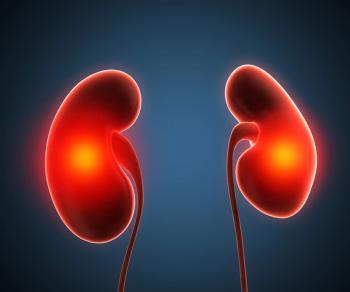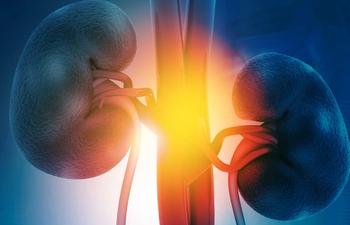
Blood Biomarker May Help Identify Those at Increased Risk for RCC
Concentrations of KIM-1 in the blood may predict for renal cell carcinoma up to 5 years prior to diagnosis.
Concentrations of kidney injury molecule-1 (KIM-1) in the blood may predict for renal cell carcinoma (RCC) up to 5 years prior to diagnosis, according to the results of a study published in Clinical Cancer Research. Additionally, those patients with high concentrations of KIM-1 had worse survival, the study showed.
“Identifying a sensitive and specific tumor marker that can detect early-stage RCC would have strong potential to improve the overall survival for RCC,” wrote
According to the
Prior research has shown that increased levels of KIM-1 in the urine and plasma were present at the time of clear cell RCC diagnosis. To assess whether plasma KIM-1 was associated with a risk for RCC diagnosis, the researchers measured KIM-1 concentrations in 190 patients with RCC and 190 controls from a population-based prospective cohort study. Patients with RCC had entered the study as many as 5 years prior to diagnosis.
KIM-1 was detected in the majority (93%) of cases and in 70% of controls. The median concentration of KIM-1 was 149 pg/mL in patients with RCC and 59 pg/mL in controls.
The incidence rate ratio of RCC with a doubling of KIM-1 concentrations was 1.71. Comparing the 80th percentile vs the 20th percentile of the KIM-1 distribution in the sample of patients corresponded to an incidence rate ratio of 63.3.
During a median follow-up of almost 8 years from diagnosis, 88 of the 190 patients with RCC had died. Those who died had a median survival of 1 year. The researchers found a non-linear association between KIM-1 concentration and risk for death among patients with RCC.
The researchers noted that KIM-1, in combination with other known risk factors, was not unlikely to be of use in the diagnosis of RCC in a general population setting.
“We envisage that KIM-1 will be useful in settings where the risk of RCC is higher, such as patients undergoing abdominal CT scanning, where KIM-1 could be used to stratify risk of RCC,” they wrote. “This will be particularly important given the rise of routine CT scans, and the strong association between number of CT scans and number of nephrectomies performed at the regional level in the US, indicating a substantial burden of overdiagnosis.”
Commenting on the study,
“Currently we have no blood test to detect for kidney cancer,” Hafron said. “Based on the data in this paper, KIM-1 could potentially perform equally or better than PSA testing.”
He also noted that the use of KIM-1 in addition to the risk factors for kidney cancer-smoking, sex, age, BMI, history of hypertension, and diabetes-could improve the predictability of finding renal cell cancers.
“This is potentially important because 30% of renal cell cancers are metastatic at diagnosis,” he said.
Newsletter
Stay up to date on recent advances in the multidisciplinary approach to cancer.


















































































